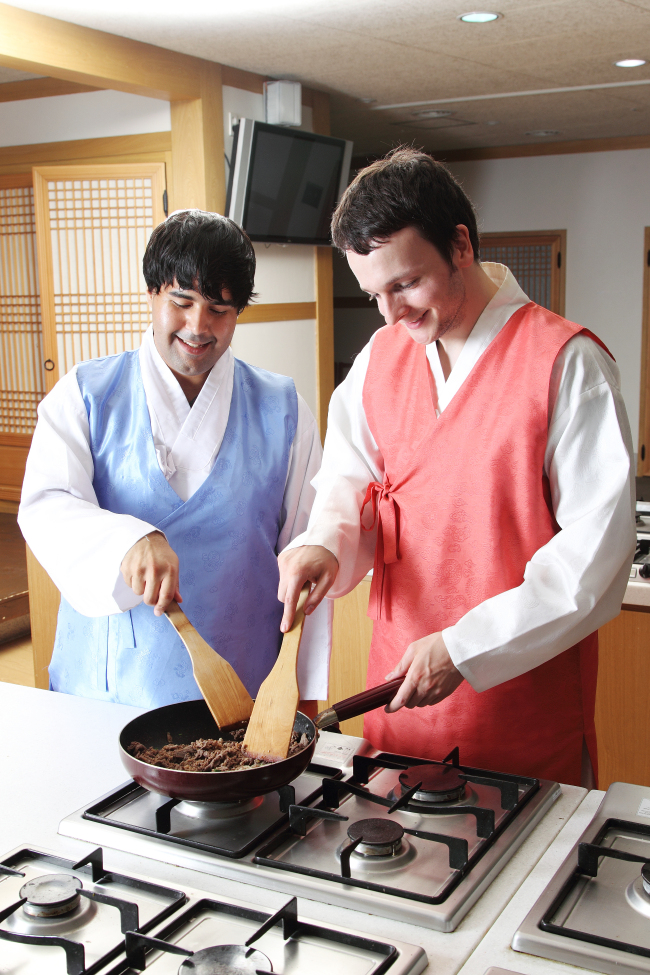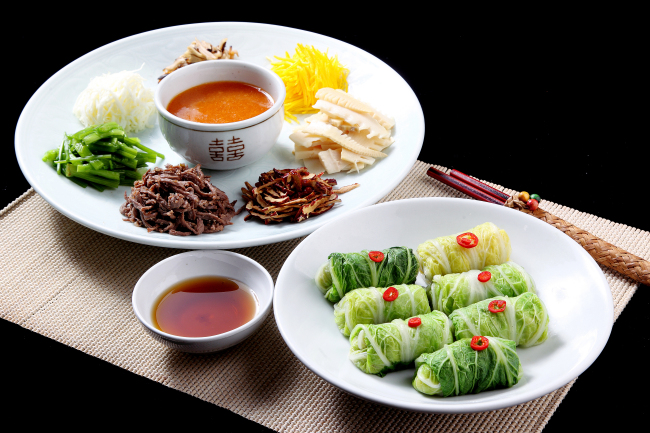Drama-inspired tourist program offers Korean cooking class
Korean traditional culture is focus of newly launching ‘HAN STYLE’
By Korea HeraldPublished : July 24, 2013 - 20:13
There is more to Korean culture than Psy and K-dramas. For those interested in the country’s traditions, the state-run Korea Cultural Heritage Foundation is launching a tourist program to promote Korea’s food, music, dance and more.
Titled “HAN STYLE,” the program features the traditional Korean cuisine hansik, the traditional Korean costume hanbok, the traditional Korean paper hanji and the Korean writing system Hangeul, as well as traditional dance and music performances.
Titled “HAN STYLE,” the program features the traditional Korean cuisine hansik, the traditional Korean costume hanbok, the traditional Korean paper hanji and the Korean writing system Hangeul, as well as traditional dance and music performances.

When the program is introduced in August, participants will be able to participate in a cooking class to learn to prepare Korean royal court cuisine. Those who watched the popular “Jewel in the Palace” may be familiar with what they get to cook, as the two dishes ― sungchae dumplings and seasoned bamboo shoots with ripe persimmon ― were shown in the 2003 Korean period drama series.
Sungchae dumplings are wrapped in Chinese cabbage leaves, instead of the typical skin made by rolling out flour dough. In the drama series, its protagonist Jang Geum (played by top actress Lee Young-ae), who is an apprentice cook for the royal family in the Joseon palace, makes dumplings for the king with cabbage leaves after her flour is stolen by a coworker.

Han Bok-ryo, holder of Intangible Cultural Property No. 38 in the culinary arts of the Joseon royal court, helped the organizers create the cooking class program. Han served as a food consultant for “Jewel in the Palace.”
“In order to learn about Korea’s traditional cuisine, you have to understand Korea’s natural environment and the four seasons,” Han said at a pilot class held Tuesday.
“The Korean Peninsula is surrounded by the ocean, with mountains along its east coast and most of its rivers flowing westward. We get plenty of seafood, as well as freshwater fish from the rivers, and a lot of other ingredients from the mountains and the fields. That is why we have so many different kinds of food, aside from bulgogi and kimchi,” she said.
In September, participants will learn how to make bossam ― reportedly Psy’s favorite Korean food ― in which steamed pork is wrapped in lettuce or perilla leaves and topped with soybean paste or hot pepper paste. The organizers said they chose to include bossam in the cooking class program because Psy has repeatedly recommended it whenever he goes overseas.
Those who participate in “HAN STYLE” can also take photos wearing hanbok, learn how to write their own names in Hangeul, and watch Korea’s traditional performances including buchaechum, which is performed by a group of female dancers with folding fans.
The program takes place at the Korea House in Pil-dong, central Seoul, a traditional Korean building designated to promote traditional Korean culture among both locals and foreigners.
The “HAN STYLE” program runs from August to December, every Sunday, Monday and Thursday at 4 p.m. Tickets cost 30,000 won. For more information, visit www.koreahouse.co.kr or www.chf.or.kr.
By Claire Lee (dyc@heraldcorp.com)
-
Articles by Korea Herald



















